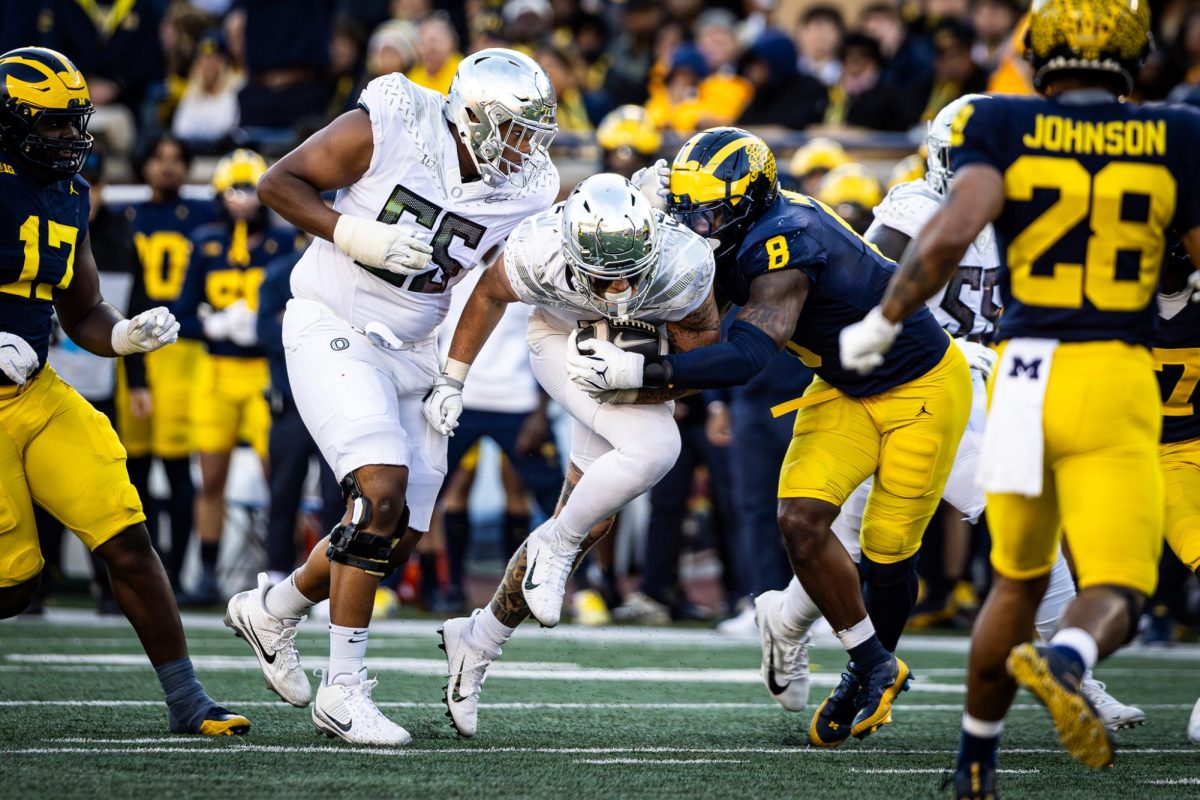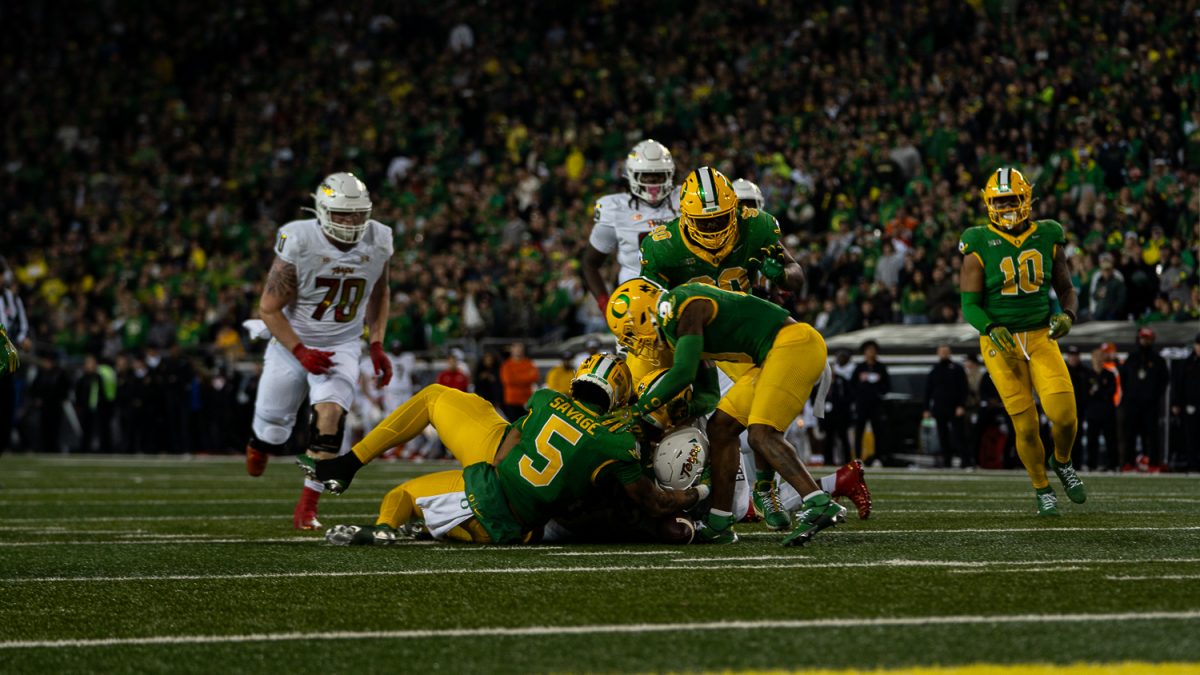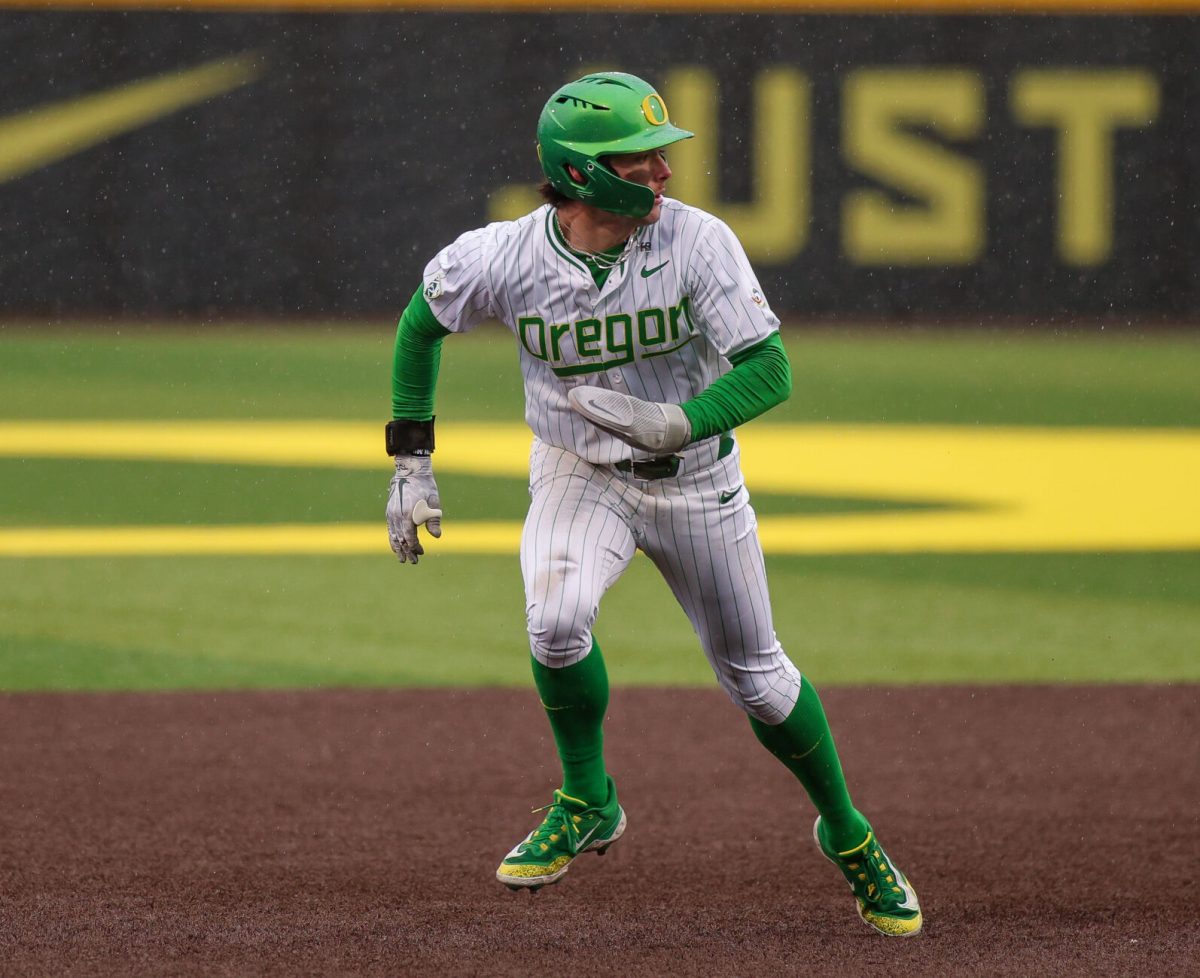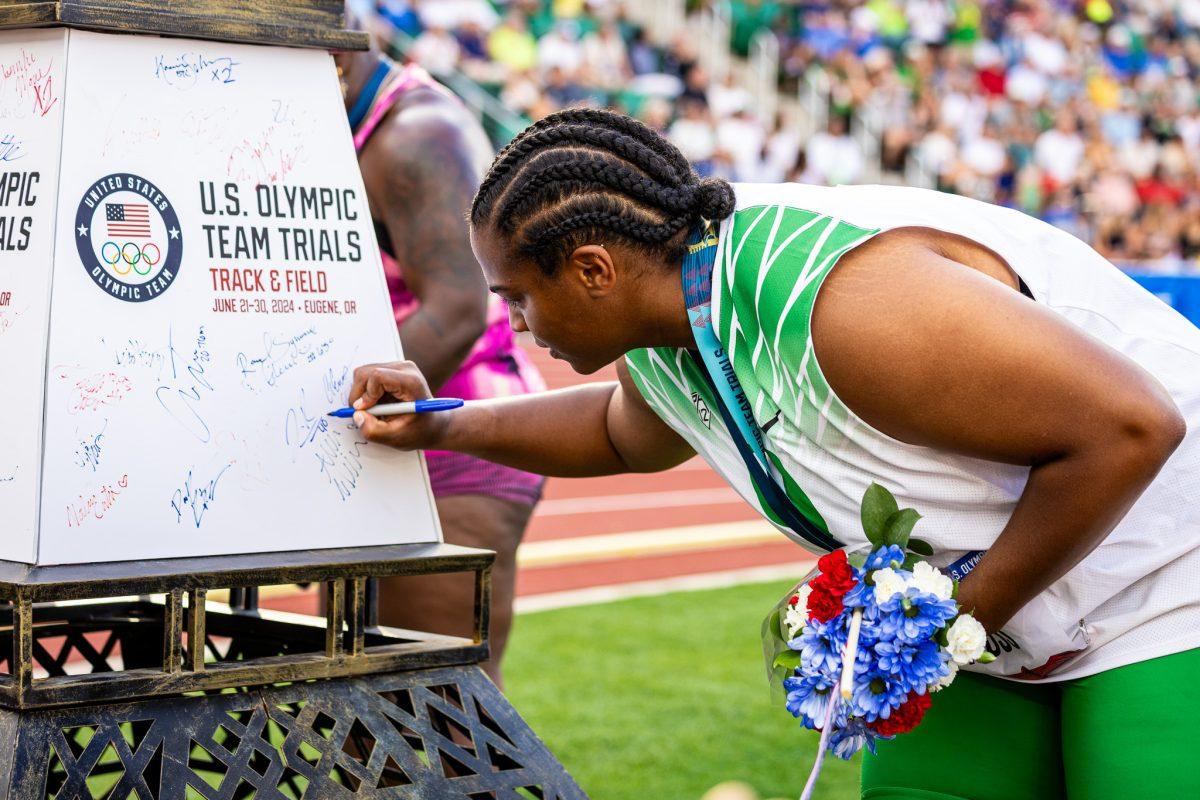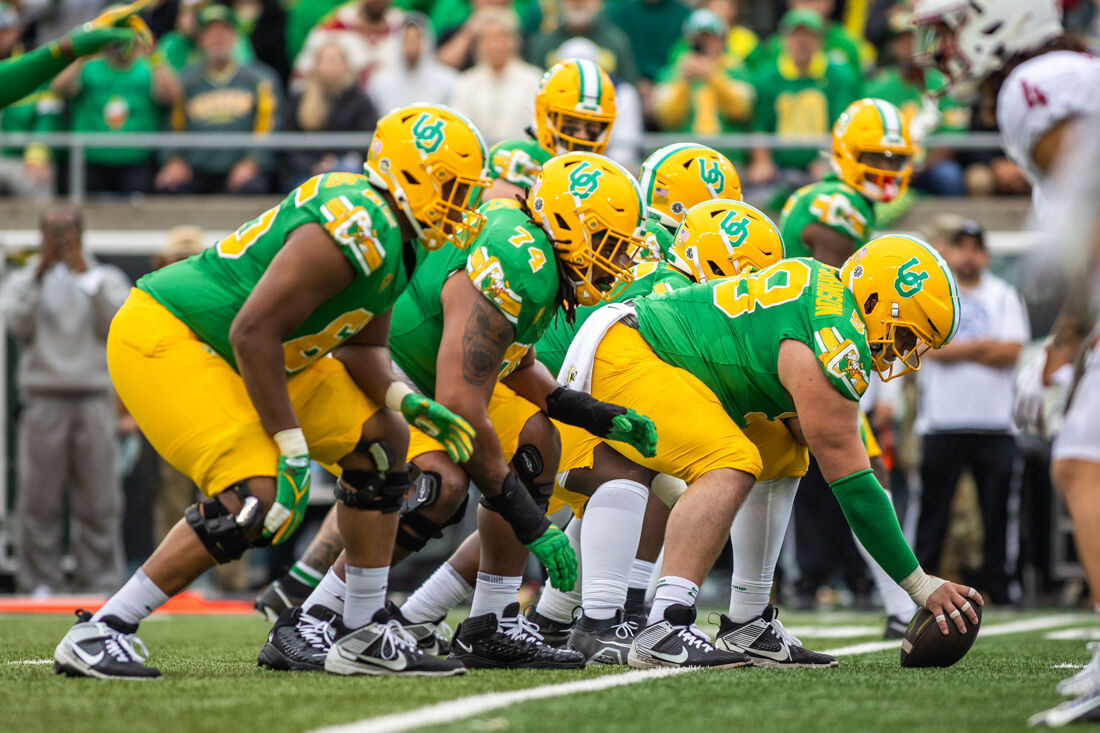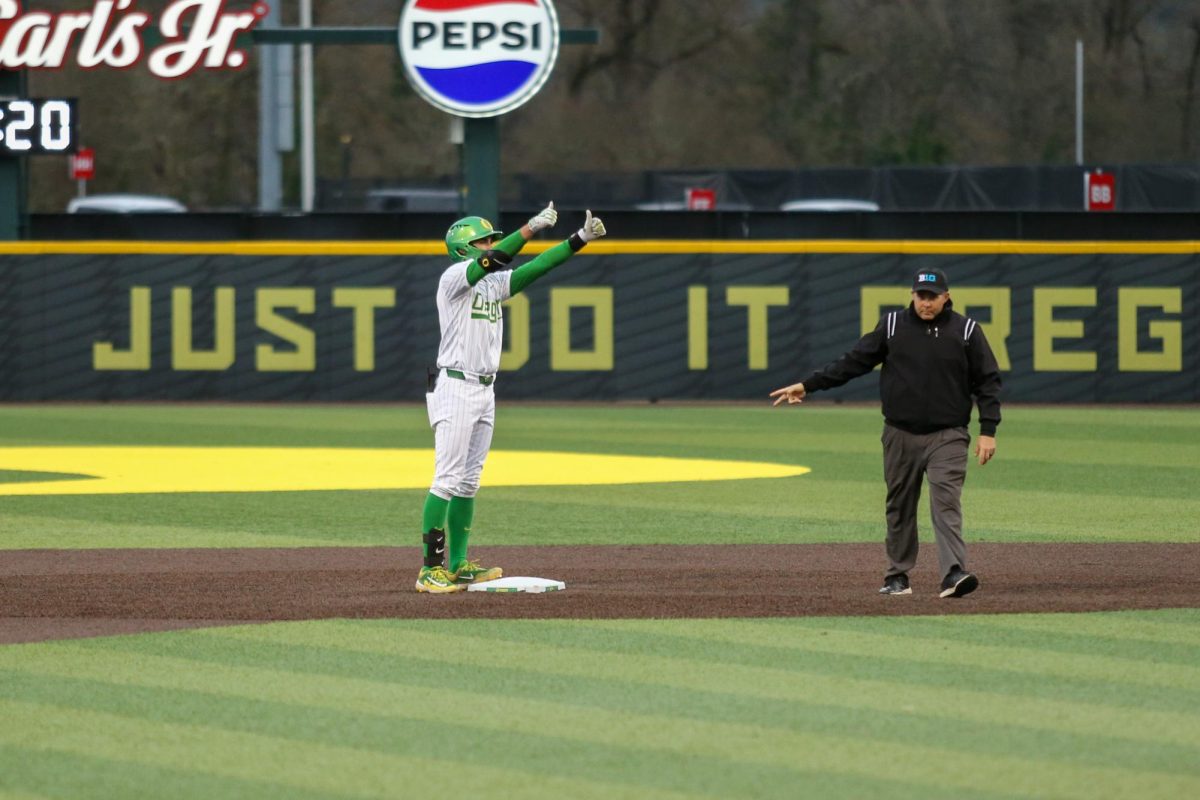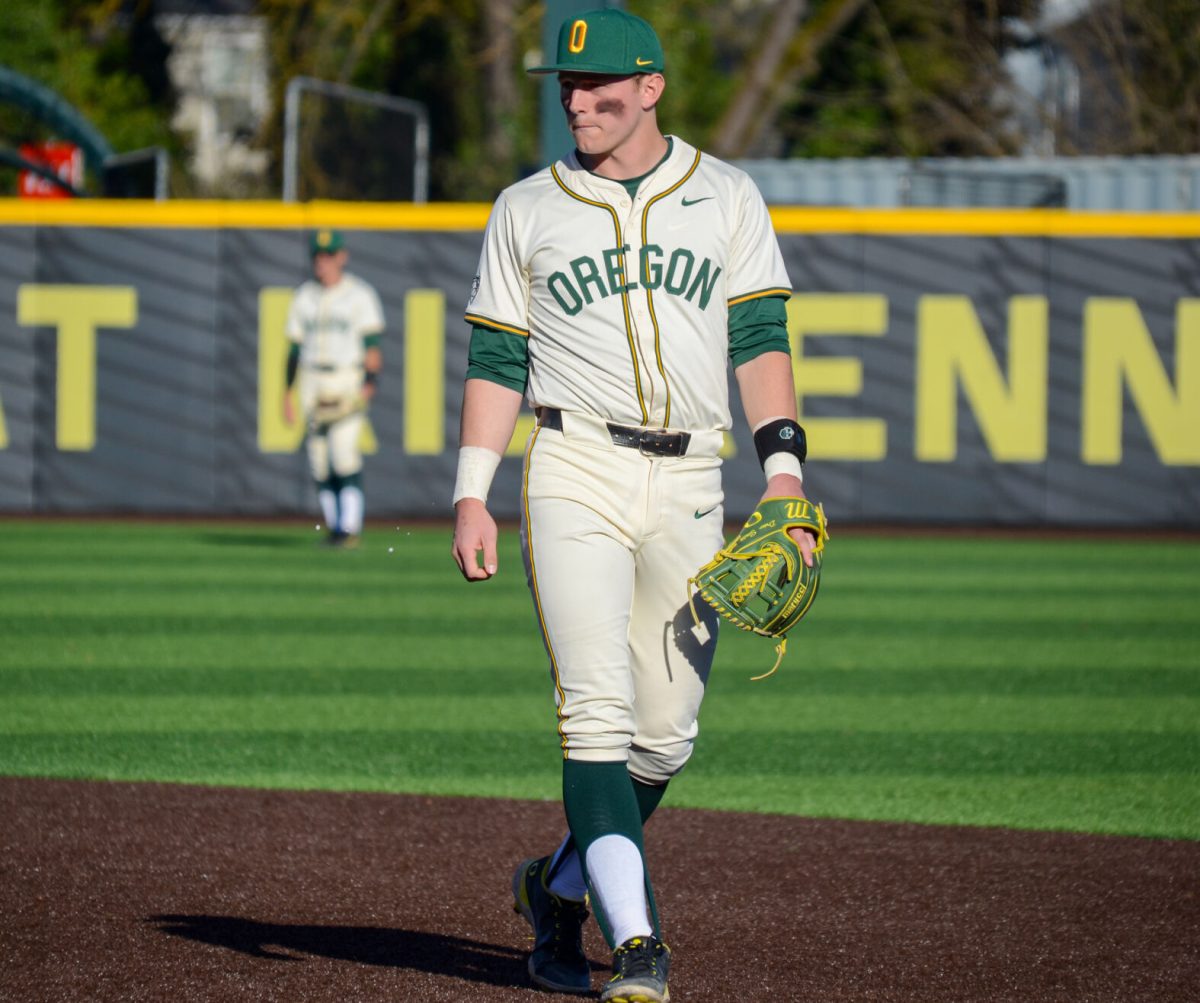As “Let’s go Ducks!” chants rained down in The Big House, the reigning national champions suffered their fourth defeat of their title-defending season.
Despite a brief moment in the fourth quarter in which Michigan looked like they might spark a comeback, the Ducks had full control of the Wolverines in their ninth win of the season.
There are momentum swings and defining moments in any football game. One drive late in the first half felt as though it put Oregon’s victory on ice.
The previous Michigan drive left head coach Sherrone Moore with a difficult decision. Does he trust his struggling offense to attempt a 4th-down conversion from the Oregon 42-yard line, or does he bring out the punt team and try to pin the Ducks deep in their own territory? He opted for the latter, much to the chagrin of The Big House crowd.
But, it worked. Oregon started its next drive from its own 6-yard line, clinging to a 14-7 lead with nine minutes to play in the first half.
It was a crucial moment. A scoring drive could give Oregon a two-score lead and remove some of the crowd’s energy.
It ended up being one of Oregon’s best and most timely drives of the season. Dillon Gabriel led a 10-play, 94-yard touchdown drive that took 4:37 off the clock.
The drive was a masterclass from Gabriel, who was 5/6 for 68 yards. Aside from the one incompletion, Oregon gained yardage on each play.
The Ducks gained four 1st downs on the drive, twice converting on crucial 3rd-down situations.
Gabriel hit Justius Lowe twice for 20 yards, Patrick Herbert for five and Evan Stewart for five before hitting Traeshon Holden in stride along the sideline on 3rd-and-1 for a gain of 38, setting the Ducks up on the doorstep for Noah Whittingon to punch in his second touchdown of the day.
Oregon took a 21-7 and, more importantly, all of the game’s momentum. With Michigan on its heels, the Ducks scored once more before the half, effectively removing The Big House noise.
“We talked about eliminating the crowd in this game,” Lanning said. “The warriors are the ones that fight the battle and they’re the ones that control the atmosphere, not the spectators.”
With a 28-10 halftime lead, the Ducks were able to be a little experimental and unconventional in the third quarter, a period that’s plagued Oregon in 2024. The Ducks have struggled to have any sense of dominance in the third quarter this season, and Lanning is well aware of it.
“Yeah, there’s a trend, right?” Lanning said about third-quarter struggles. “There’s something we’re certainly aware of and attacking. You know, again, they came out and got a 3-and-out on the very first drive in the third quarter. So, it’s something we want to look at and improve.”
However, the cushioned lead allowed the Ducks to experiment with unique formations and varying personnel. Given the Tez Johnson injury, Gabriel’s weapons became a revolving door in the second half. So, the Ducks had to improvise.
“Those [formations] were all part of our initial plan,” Lanning said. “We talked about trying to enhance our ability to be better in the third quarter and having some pieces who could help us out there. But it was ultimately stuff we didn’t get to in the first half that we felt was available to us in the second half.”
Gabriel commented after the game saying that he’s worked with just about every combination of offensive personnel that one could draw up. His confidence remains steady no matter who’s on the field. When seeing the kind of momentum-creating drives he’s able to orchestrate, it’s understandable why.


